Kovács kékfestő
Four in the morning. Miklós Kovács, Master of Folk Art went to his workshop to fire the stove. The most exciting day of the blue-dyeing arrived. The steam is ready at six o’clock. Then the rest of the family arrives: his wife, Mária, and his daughter (both folk artists), and the grandchildren. Everyone knows what to do. Quality depends on the fire and the speed. There is a vat, filled with 640 liters of blue paste of 85 centigrade, where the cotton is moved up and down for an hour, to be penetrated by the dye. The hourly production is 600 meters, so they will finish with the 4000 m in about 7 hours. That might be enough for four months.
“We are using artificial indigo of BASF. For the size of the dye particle is far much smaller as of the one of the natural dye, the paint adheres well and the dyeing is effective.” The indigo is a vat dye. Being originally insoluble in water, the powder dissolves in alkaline environment using due reducing agents. Covering the cotton fibers, the dye, later contacting with air, is oxidizing deep into the material, and becoming insoluble. If a true blue-dye fabric is washed in an alkaline medium, it never lost the color, over against other dying procedures, wherein the dye covers only the surface of the material, and easily run out.
After airing, the textile goes to an acidic bath, where the protecting layer used for patterning peels off, and the carefully prepared motifs are shining out in white. Then another bath follows, and the next day four kilometers of blue cotton is waving on the dryer frames at the end of the garden. After rinsing in potato-starch solution, it is ironed and cut to size. If you are a lucky one, you can find it at fairs and their shop in Szentendre.
In the past, natural indigo was used for blue-dyeing. The bass of indigo shrub was peeled, then brayed in a mortar until the bass was smashed, and the fine powder of the dye accumulated on the bottom of the mortar. The dyeing was performed in a ground-sunk vat. “My father told me, that at his time the vat was at the courtyard, frozen in winter mornings. He broke the ice first to make dyeing. Eight hours needed to dip twenty times the cotton, hanging in star-like frames. At least 20 dye layers needed to avoid fading. He was able to make 60 meters daily.”
The sunlight and abrasion resistance is affected by the particle size of the dye. “ Once I got an order from the ‘blue Bedouins’. I tried to persuade them from the blue-dyeing, but they explained that the daily temperature fluctuation in the desert is 50 centigrade, and when sweating, their necks and arms became blue of the indigo. For this reason they are called ‘blue Bedouins’.“
The crown jewels of every blue-dye workshop are the printing sets. We can see wood printing sets even more than 100 years old. To prepare sets is a major undertaking, and needed tiny copper plates. For polka-dot pattern, copper and wood are combined.
To reach sharp contours, paste of blue vitriol and gum Arabic is used. The science of the textile dyeing holds many secrets. Colored dot patterns are hidden in the drawers.
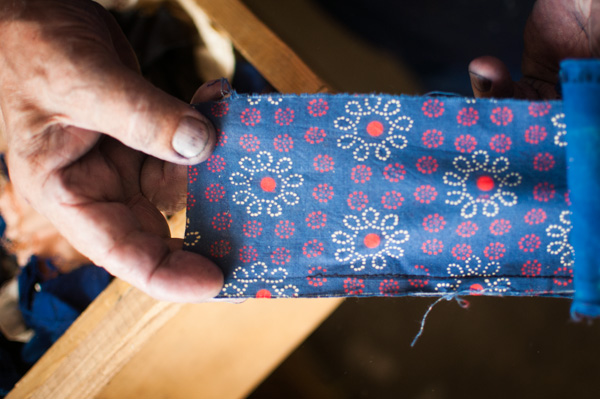
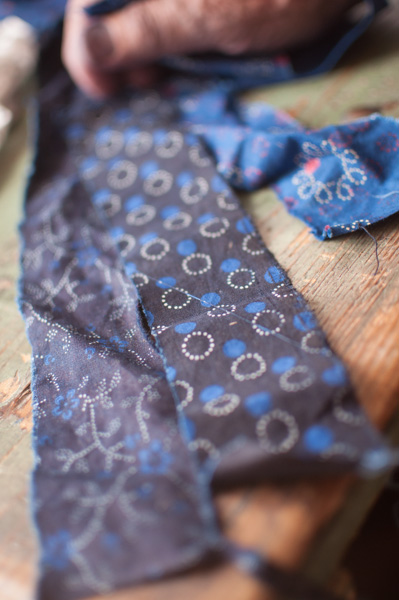
“In our family, women vote which patterns are selected for a given event.” Table lines and scarves are still hand-printed, while drapery is patterned with machine. It takes several years until somebody learns exactly the perfect management of the wood printing sets. “One grandson is very interested, so I teach him the profession now.”
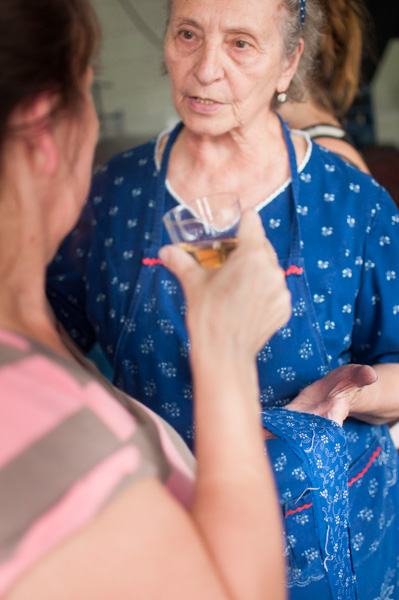
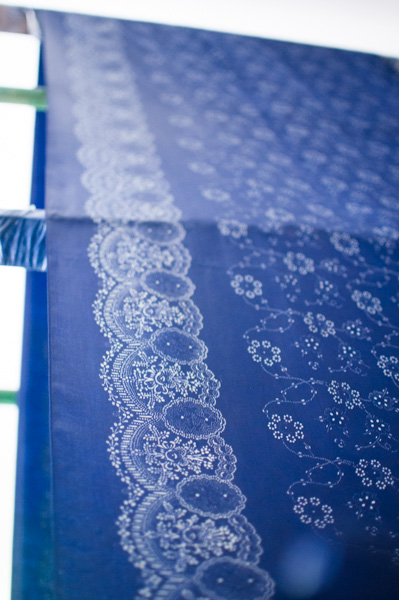

In this country, the blue-dyeing came into general use in the 18th century. Before WWI, there were 400 blue-dyers. Today, perhaps two remain in this craft, in classical meaning. It even disappeared from Europe as well. It is difficult to get raw material, too. Indigo plant has not grown, the dye is not manufactured by the BASF, and tightly woven cotton canvas is produced in Pakistan and Turkey for order only.
There are many steps until the pretty bright, stiff textile is ready for sale at artisan fairs or at folklore shops. Mr. Miklós Kovács, even being 87, is running the machines, with anxious attention of his wife and daughter, while all eyes are on the grandchildren…
PREVIOUS: Gábriel Ajna
NEXT: Turay Balázs
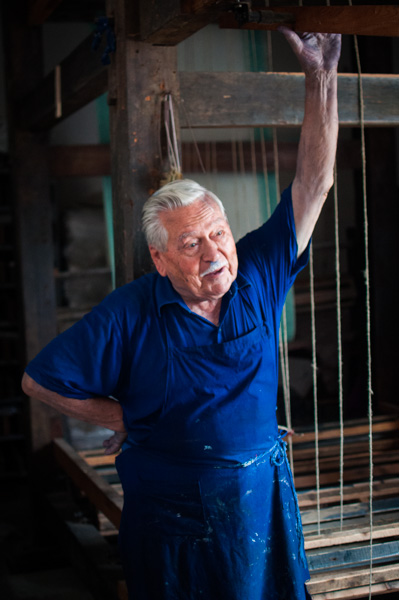
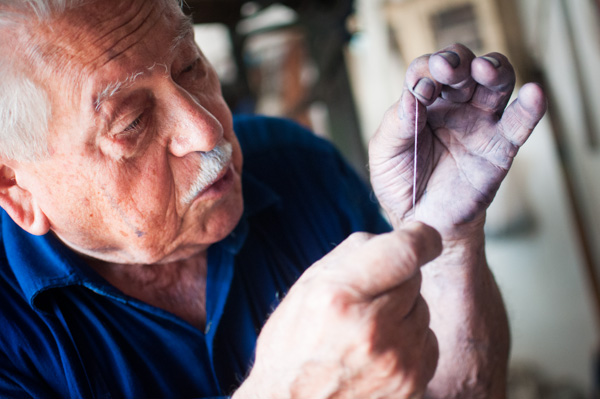
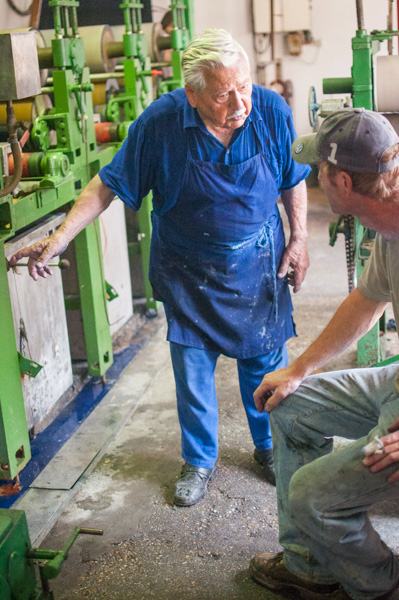
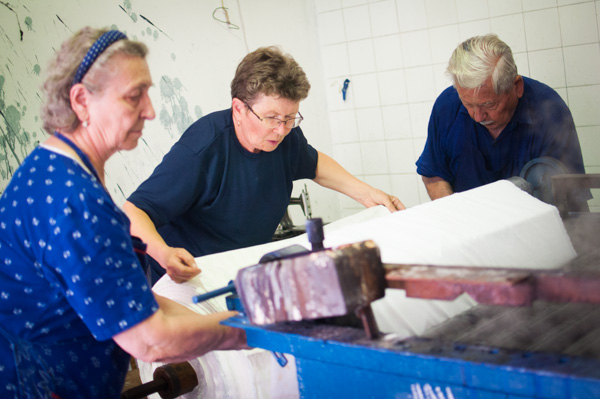
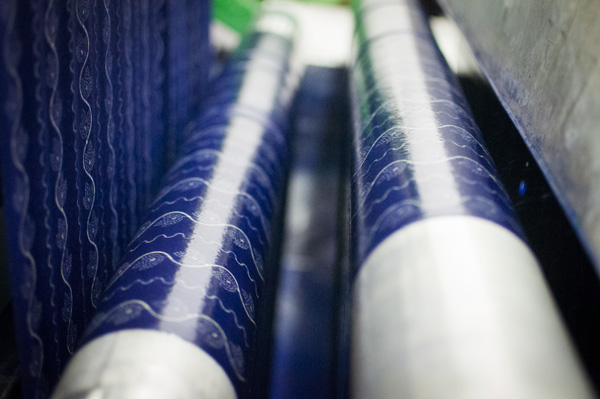
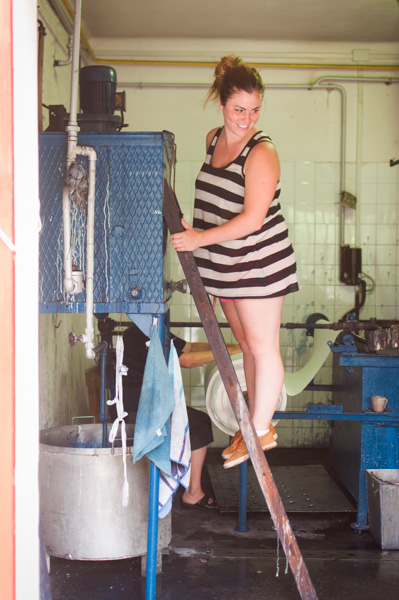
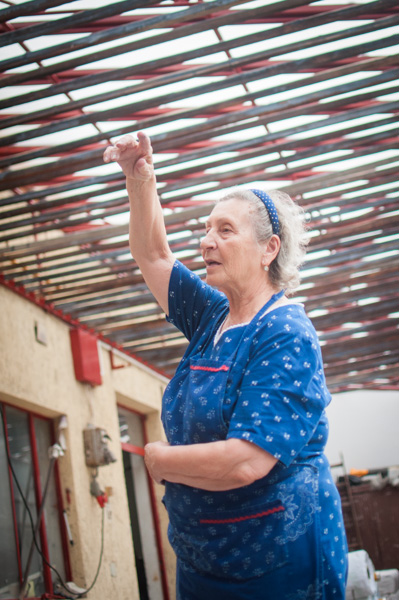
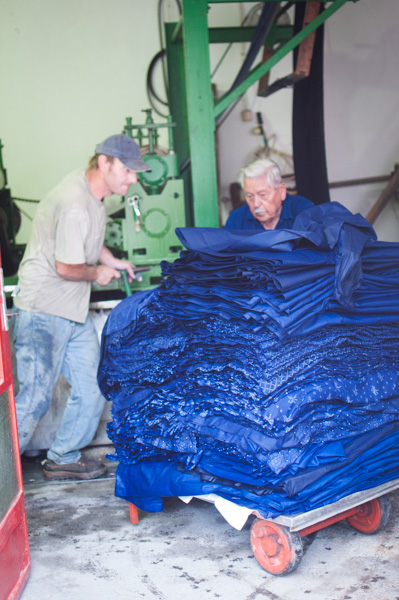
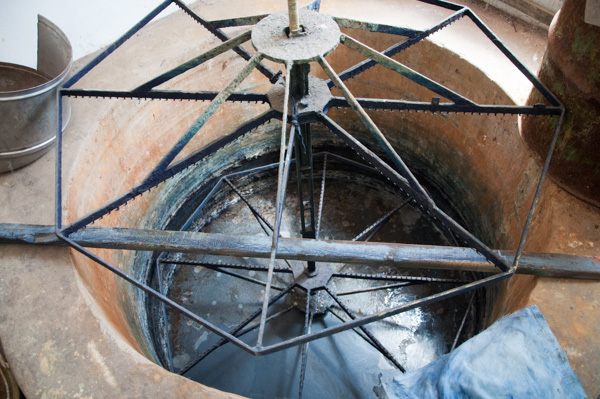
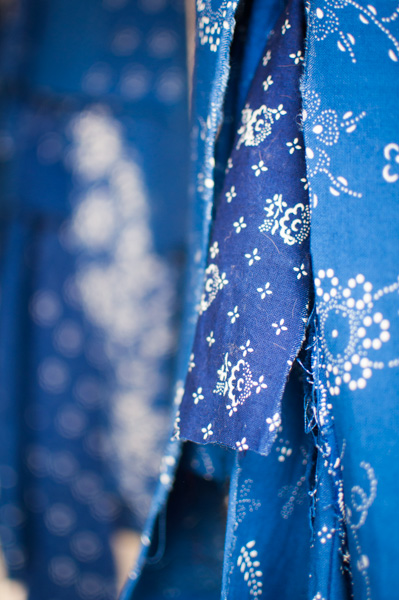
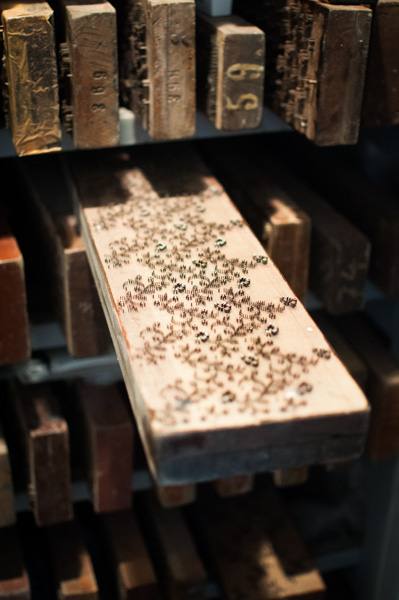
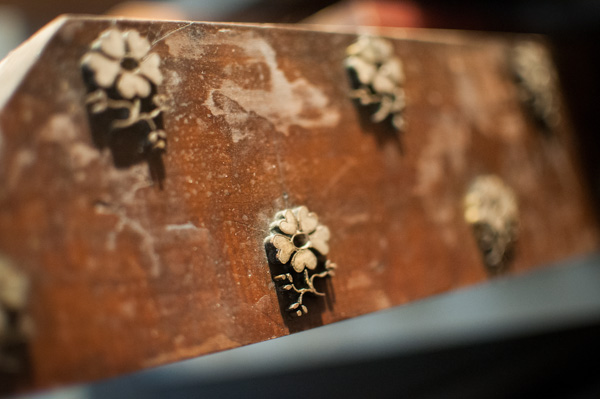
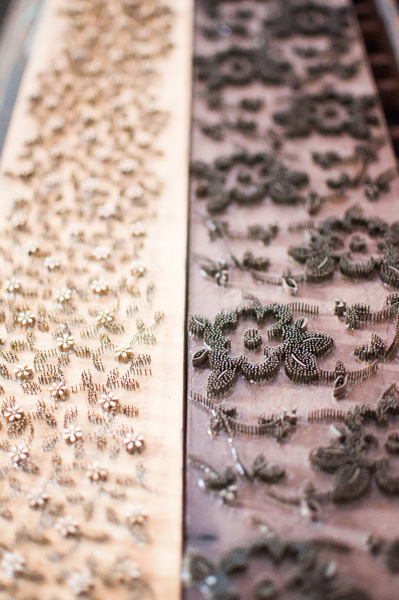
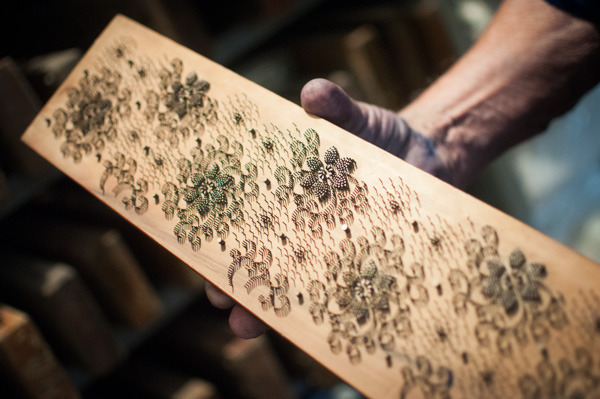
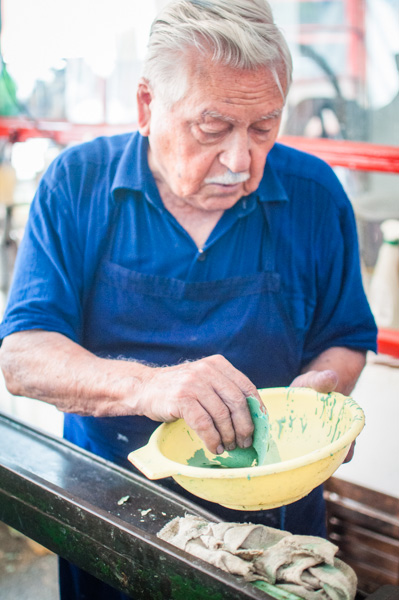

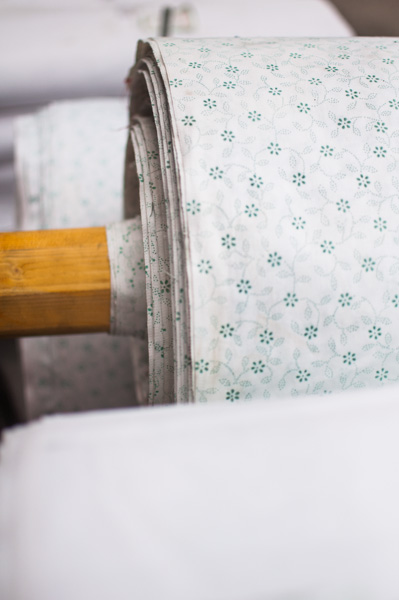
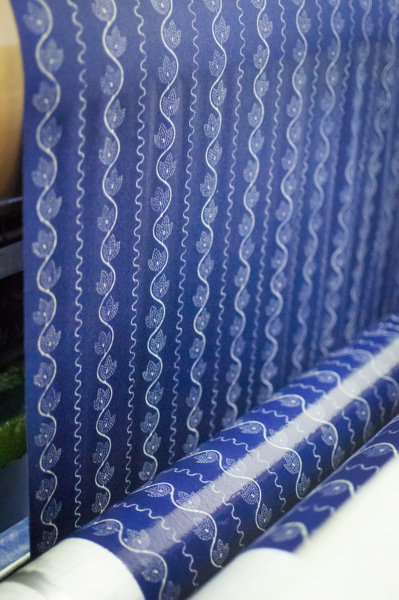
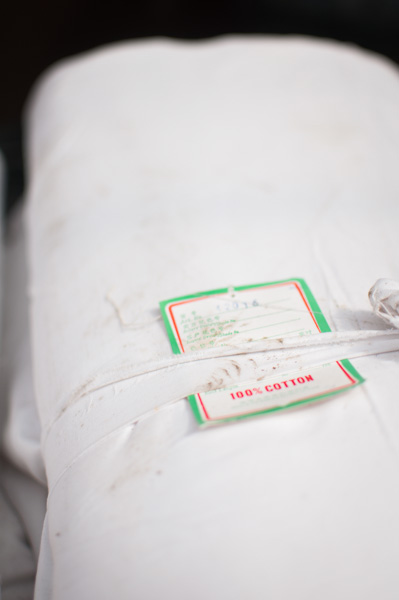

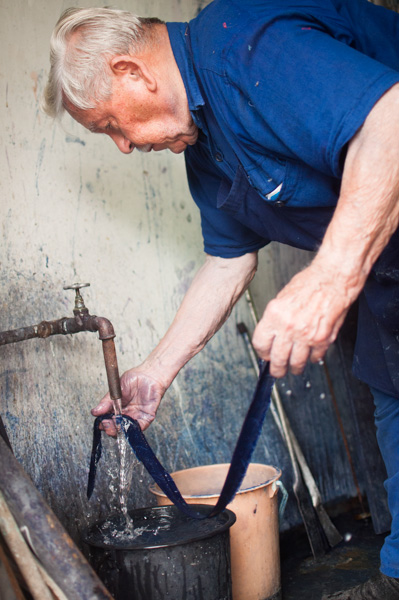
USER COMMENTS ( 0 )
Follow Comments via RSS feed. Trackback Comments from your website.